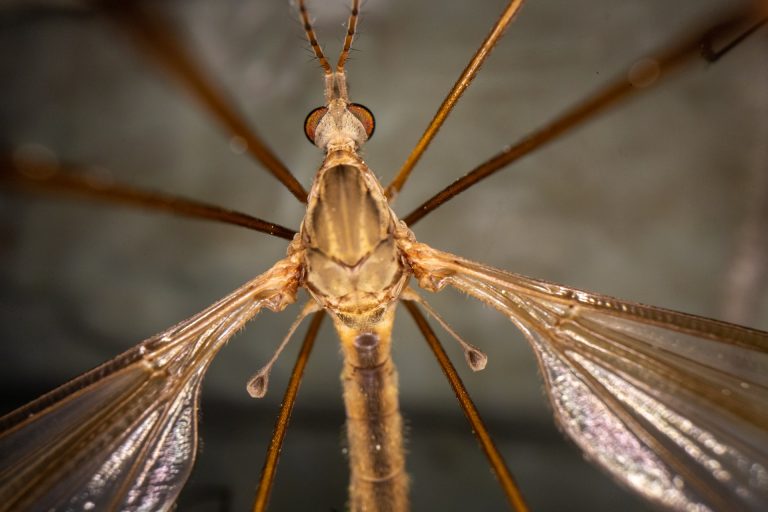Most winged insects have two pairs of wings: the pair on the mesothorax is called the forewings, and the pair on the metathorax is called the hindwings. No wings grow on the prothorax.
Entomologists believe that the earliest winged insects all had two pairs of wings. Fossil insects from the Carboniferous period (about 300 million years ago) obtained by entomologists confirm this.
Why do common flies and mosquitoes only have one pair of wings?
Entomologists tell us that flies and mosquitoes have a pair of slender structures behind their wings, on the underside. However, these structures have degenerated and are generally not visible, so flies and mosquitoes are universally recognized as having only one pair of wings and are classified as “Diptera.” One may wonder why insects with two pairs of wings, such as dragonflies and butterflies, are good fliers, while flies and mosquitoes with only one pair of wings are also excellent fliers. To answer these questions satisfactorily, we need to discuss the function of the small rod-like structures behind the wings (entomologically called “halteres”).
The halteres are vestiges of the degenerated hindwings, which entomologists no longer consider as wings. However, these small halteres serve many purposes, even more advanced than the true hindwings! Scientists have conducted experiments by removing the halteres of a certain fly (such as a crane fly) and found that the fly lost its ability to balance during flight. However, when a piece of cotton thread was attached to the posterior end of the abdomen (the original location of the halteres), the fly could fly normally again. Therefore, it is believed that halteres have the function of balancing flight. What’s even more interesting is that flies and mosquitoes, despite originally having two pairs of wings, do not lose their flying ability after transforming into insects with only one pair of wings; on the contrary, due to the various functions of the halteres, their flying ability is enhanced!

